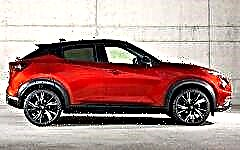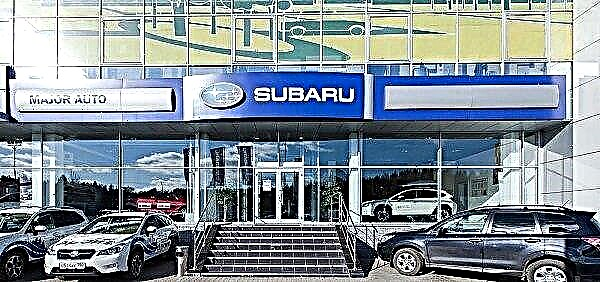
The content of the article:
- Subaru name
- Manufacturer of budget models
- Advanced technical solutions
- Switching to four-wheel drive
- Introducing turbocharging
- Sports victories
- Departure from generally accepted classifications
- Continuously variable transmission
- Creation of a class of sports station wagons
- Achievement-driven mass
Subaru has long been synonymous with a quality, usually four-wheel drive vehicle made in Japan. The models of this brand have never been affordable, which made them quite elite.
Despite the fact that this is a fairly young brand, there were many interesting facts in its history that even loyal fans are unaware of. Let's try to choose the 10 most important events that predetermined the brand's reputation and its place in the market.
1. The name Subaru translates as "bringing together"

The automotive division was originally created on the basis of the Fuji Heavy Industries industrial group, whose president announced an open competition for the best name for future products. In his firm conviction, the car must have had a Japanese name. But, despite numerous attempts, nothing suitable was proposed, as a result of which, Kenji Kita himself came up with the name of the brand, which turned out to be the most successful and symbolic.
In addition, Subaru has a literal translation - Pleiades, a star cluster in the constellation Taurus, which makes the logo made in the form of a set of stars understandable.
2. The Subaru brand was originally conceived as a manufacturer of budget models

Looking at the current price tags, it's hard to believe that Subaru made truly popular cars in the lower price range. The first model was put on the assembly line only in 1958 and was a tiny two-door car of the simplest design.
The fact is that in the 50s of the last century, Japan had not yet recovered from the difficulties associated with the Second World War. It was difficult to call the model with the 360 index a car, since its dimensions were much smaller than that of the first Zaporozhets model. A tiny two-cylinder engine located in the back and a virtually missing trunk made it a motorcycle stroller. But post-war Japan needed just such vehicles, so production lasted until 1971. At the same time, about 10 thousand copies were sold in the United States, which cannot be explained even from a pragmatic point of view.
3. Subaru has always implemented advanced technical solutions

Despite the fact that initially the main products of the plant were the simplest cheap cars, and the implementation of complex technical solutions was difficult for economic reasons, Subaru engineers always used the latest developments.
Even if you remember the first 360, you can find such design features that appeared on European and American cars much later, for example: independent rear suspension, the use of plastics and aluminum parts to reduce weight.
And already in 1965, with the advent of the Subaru 1000, the idea of a front-wheel drive layout was implemented. In addition, it was with this model that the production of boxer engines traditional for the concern began.
4. Transition to four-wheel drive

Already in 1971, rather modest and technically simple cars were replaced by the Subaru Leone model, built on an all-wheel drive platform, which allowed the company to occupy a completely free market niche. Not surprisingly, more than a quarter of the cars produced were exported, including to the United States, where 30,000 copies were sold per year.
5. Introduction of turbocharging

Today, this technology is actively used even on the most budget models, which allows you to increase power and achieve better efficiency indicators. But in 1982, when Subaru released its first turbocharged model, it was the preserve of powerful industrial or truck engines, as well as the most expensive sports cars. This allowed the company to expand its target audience and offer the market a unique combination of a powerful passenger car with four-wheel drive, which has excellent handling. And if you remember that boxer motors have a low center of gravity, then the last fact becomes easy to explain.
6. Sports victories

Subaru's achievements in the world of motorsport can hardly be overestimated, since from the very beginning of the production of passenger cars, they regularly took part in major competitions. In 1990, a fruitful cooperation between the Japanese concern and the British company Prodrive began, which was engaged in the preparation of sports car modifications.
In the same year, a specially trained Legacy won the prestigious Safary Rally in its group. After that, on the ring and rally tracks for the next twenty years, cars were in the lead not only thanks to experienced racers, but also to advanced design developments.
A special role in these achievements is played by the emergence of the Impreza model, which became the standard of a sports car, which few could compete with.
7. Subaru never adhered to the established classifications

Decades ago, in the automotive field, certain signs were developed, according to which the belonging of a model to a particular class was established. As a rule, the main criteria were: engine displacement, overall dimensions, number of passenger seats and carrying capacity. These parameters became generally accepted, as a result of which it was quite easy to identify potential competitors.
As for Subaru, most of the company's models did not fall under any of the established groups. This was evident from the very beginning, when the 360 model could not be attributed to either cars or motorized carriages.
Subsequently, with the advent of all-wheel drive, everything became even more complicated, since passenger cars on such a platform had practically never been produced by anyone.
When the Forester started production, even experienced motorists could not squeeze it into the existing classification. A car with a station wagon and a design in the style of off-road vehicles of those years had modest dimensions and a rather small ground clearance, as a result of which such a concept as an all-terrain wagon appeared, which was later transformed into a crossover.
8. Subaru was the first company to serially equip cars with continuously variable transmission

A continuously variable transmission or CVT is still a rather exotic design, despite all the obvious advantages, such as constant engine operation at optimal mode, high efficiency and ease of control.
The first developments in this direction were carried out at the dawn of motorization and had a different principle of operation and design. For example, the first operating model was made in the form of two stone flywheels mounted in perpendicular planes, and the gears were changed by their mutual displacement.
The system, developed by Subaru, was named ECVT and was made in the form of a metallized belt stretched between variable-diameter pulleys, due to which it was possible to smoothly change the gear ratio. It is this solution that has become the benchmark for most automakers today.
9. Creation of a class of sports wagons

As we said earlier, Subaru cars were characterized by a combination of features of different classes, which subsequently received further development.But the Subaru Outback model stands out most clearly against this background, which was one of the first to show that a practical station wagon can have good cross-country ability, perfected handling and dynamics of a sports model.
It was with the appearance of the Outback that the formation of the class of sports station wagons began, which was laid by Audi, but finally formed precisely by Japanese designers.
On this platform, there was also a modification of the Legnum, which received even more sporty settings, which made it possible to compete on equal terms with the fastest models of competitors.
10. Mass character due to achievements

Fuji Heavy Industries has never sought to expand its automotive division into a large scale and conquer a significant share of both domestic and foreign markets. The initial goal was to meet the demand in Japan, then - to benefit from export deliveries.
But due to the fact that Subaru cars favorably differed from competitors and could offer the buyer truly fresh ideas, demand exceeded supply many times over, and now the total production of cars of the brand has exceeded half a million copies a year.
Subaru











